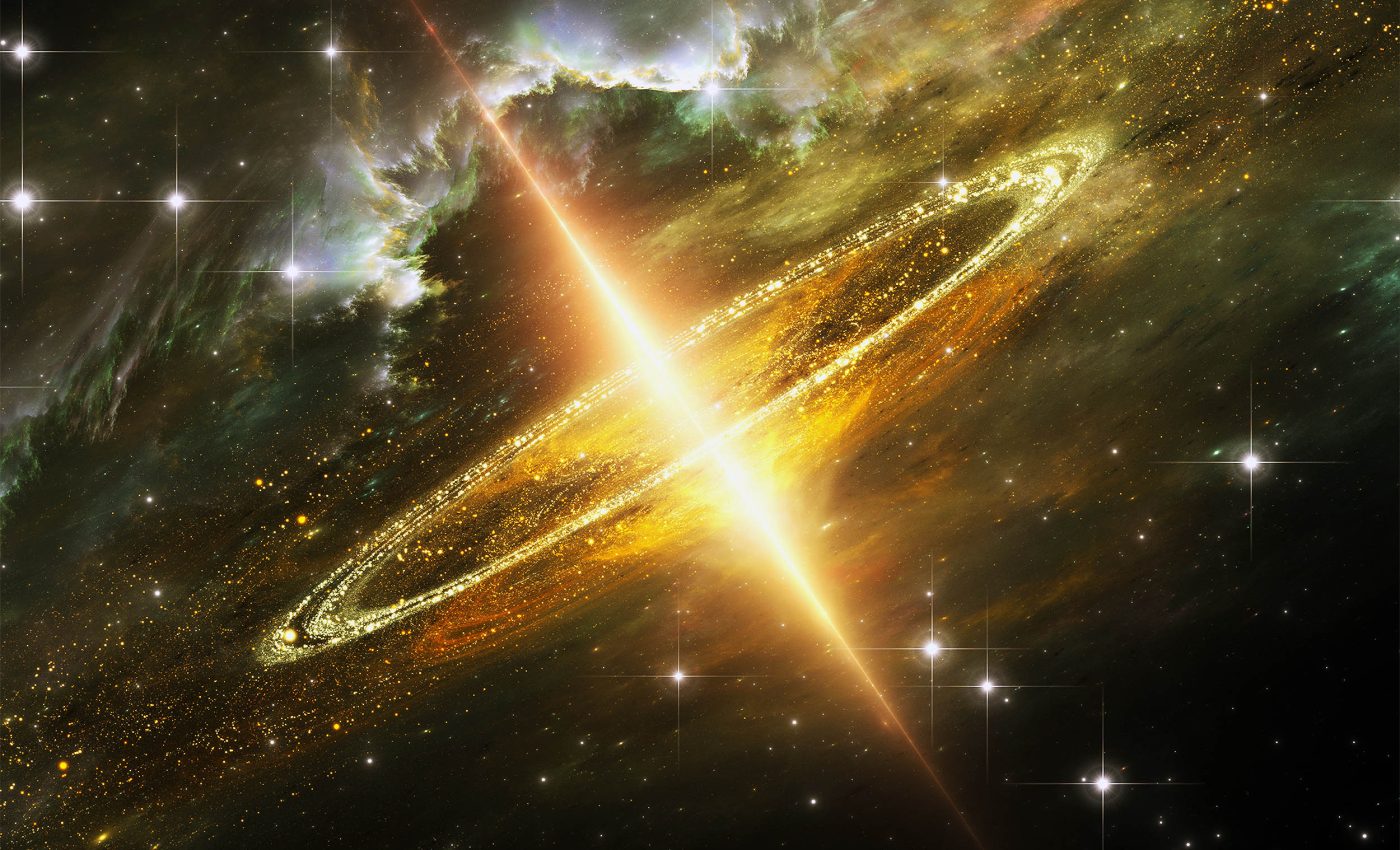
Astronomers watched an entire galaxy "turn on the lights" and awaken in real-time
Every evening, the Zwicky Transient Facility’s wide-field camera clicks through hundreds of exposures, comparing each pixel with last night’s view. If something new pops up – a sudden spark inside a distant galaxy – the system beams an alert to astronomers within seconds.
The steady rhythm of these scans, soon to be amplified by the Vera C. Rubin Observatory’s Legacy Survey of Space and Time, has turned the sky into a real-time laboratory where cosmic heavyweights occasionally step into the spotlight.
In December 2019, one such notice pointed to SDSS1335+0728, a modest spiral galaxy in the Virgo constellation, roughly 300 million light-years away.
The galaxy’s core, quiescent for more than two decades, suddenly brightened by orders of magnitude.
At the center sits a black hole about one million times the Sun’s mass, and researchers realized they were watching either a star being shredded or a black hole tasting its first steady meal.
Wake up call for SDSS1335+0728
Follow-up measurements show the rise hasn’t leveled off even after more than four years – a duration far longer than the brightest supernova flares or typical star-eating tidal disruption events.
The persistence alone makes the source an outlier, yet its overall luminosity still falls short of the blazing quasars that dominate textbooks, leaving SDSS1335+0728 in a gray zone between well-defined categories.
“Imagine you’ve been observing a distant galaxy for years, and it always seemed calm and inactive,” says Paula Sánchez Sáez, an astronomer at ESO in Germany and lead author of the study accepted for publication in Astronomy & Astrophysics.
“Suddenly, its core starts showing dramatic changes in brightness, unlike any typical event we’ve seen before.” The surprise spurred a global observing campaign aimed at pinning down the cause.
Sorting cosmic flashes
Astronomers file nuclear flares into several bins. A tidal disruption event flares when a star wanders too close to the black hole’s maw.
A turning-on active galactic nucleus marks the moment gas first spirals inward, lighting up magnetic fields and hot disks.
Changing-look AGNs swing between bright and dim states, while ambiguous nuclear transients sit in limbo until further data arrive.
Classification hinges on timing, color, and, crucially, spectra. Sky surveys such as ZTF already stream millions of measurements each night, and LSST is expected to increase that torrent by an order of magnitude.
Automated software will sift most of it, yet unusual cases like SDSS1335+0728 still demand old-fashioned follow-up on larger telescopes capable of splitting the light across wavelengths. Human review remains vital when robots raise a cosmic eyebrow.
Closely watching SDSS1335+0728
Teams pulled archived images, then pointed instruments – including the X-shooter spectrograph on the European Southern Observatory’s Very Large Telescope – toward the galaxy.
Ultraviolet, optical, and infrared emission all rose sharply, and in February 2024, the source turned on in X-rays for the first time.
The spectrum now bears the broad emission lines that announce fast-moving gas only a few light-hours from the black hole.

“This behavior is unprecedented,” says Sánchez Sáez, who is also affiliated with the Millennium Institute of Astrophysics in Chile.
“The most tangible option to explain this phenomenon is that we are seeing how the galaxy’s core is beginning to show activity,” says co-author Lorena Hernández García of MAS and the University of Valparaíso in Chile. “If so, this would be the first time that we see the activation of a massive black hole in real time.”
Watching a monster rise in real-time
Most supermassive black holes finished their growth billions of years ago, and the nearest examples appear dormant today.
Watching one light up now gives astronomers a front-row seat to processes that usually unfolded when the universe was young.
Energy pumped into the host galaxy can shape star formation and regulate future mergers, so the event offers more than a curiosity; it is a laboratory for galaxy evolution.
“These giant monsters usually are sleeping and not directly visible,” explains co-author Claudio Ricci from the Diego Portales University in Chile.
“In the case of SDSS1335+0728, we observed the awakening of the massive black hole, which suddenly began feasting on nearby gas and became very bright. This process has never been observed before,” Hernández García explained.
Ricci adds, “This could also happen to our own Sgr A*, the massive black hole at the center of our galaxy,” but it is unclear how likely that is.
What’s next for SDSS1335+0728
Researchers continue to gather spectra, radio maps, and high-energy observations to decide whether the flare stems from a very slow tidal disruption, a newborn accretion disk, or an entirely new class of outburst.
Each scenario would revise models of how material settles into a black hole and how often these awakenings occur in the present-day universe.
“Regardless of the nature of the variations, this galaxy provides valuable information on how black holes grow and evolve,” Sánchez Sáez says.
“We expect that instruments such as MUSE on the VLT and those on the upcoming Extremely Large Telescope will be key to understanding why the galaxy is brightening.”
Future facilities promise deeper looks, but for now SDSS1335+0728 serves as a timely reminder that even nearby galaxies can spring surprises.
As survey telescopes keep watch, more sleepy giants may stir, turning the routine nightly scan into a treasure hunt for cosmic firsts.
The full study was published in the journal Astronomy & Astrophysics.
—–
Like what you read? Subscribe to our newsletter for engaging articles, exclusive content, and the latest updates.
Check us out on EarthSnap, a free app brought to you by Eric Ralls and Earth.com.
—–













